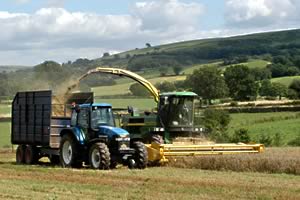2011-04-28
“I couldn’t afford not to buy that new combine” – how many times have we heard such comments in the last 30 years? Buoyed up by wheat prices forecast at £200 per tonne before harvest and combinable crops generally seeing forecast increases of £100 per tonne and more over last year’s prices there is an increasing pressure on farmers to spend the profits which have not as yet been earned.
You may ask “Why not?”, so let me suggest that the following should be considered. Land prices have about doubled since 2005 with a resultant increase in acres being marketed. The Farmers Weekly Land Tracker shows a 150% increase in land on the market for the first week in April this year compared with the same week in 2010. The non-farming landowners whose interest is due to the tax advantages which accompany ownership of farmland have made it difficult if not impossible for genuine farmers to justify financially a purchase of additional land at £6,000 plus per acre, especially as Banks have become much keener in the borrower’s ability to service loans.
As a result rents, especially on Farm Business Tenancy lettings, are increasing considerably and there is a trend towards a two tier system ie those negotiated at rent revision times compared with tendered rents. Arable rents in the former category are well into three figures per acre with tendered rents being at least 75% more and at times over £200 per acre. Can you really say that for a new five year Farm Business Tenancy you could afford to pay such rents especially when the subsidies available after 2013 are so unpredictable.
Turning now to inputs, the volatility of oil prices is a global problem which shows no sign of abating. Prices in excess of 60p per litre for red diesel put it at 50% more than a year ago. Similarly, those who in August 2010 bought nitrogen for top dressing this Spring have probably avoided the subsequent £50 to £60 or more increase per tonne since then but it could catch them out next year.
Livestock prices with the exception of pigs look reasonably encouraging but with barley, hay, straw and silage all increasing in value the costs of rearing would eat away at profitability.
On top of all this we have what is hopefully the beginnings of a recovery from worldwide recession but there may be stings in the tales of this recovery. Greece, Ireland and Portugal’s fate do not augur well for the EU and the money that it might (or might not) have available to distribute in the form of subsidies.
So where does all this leave us? In spite of everything the values of products in the future are greatly encouraging providing we do not spend all the money we hope to earn. It would be good to know that the answer to the question “Whither agriculture?” is that our industry is on a good and sound footing for the foreseeable future. Perhaps, with an element of caution, this may be the case but I would urge you not to spend the cash before you have earned it.
Article by John Hopkinson, Fisher German (01636 642503)
 Dry Stone Wallers Coping Brilliantly Dry Stone Wallers Coping Brilliantly
 One Manís Leisure is Another Manís Work One Manís Leisure is Another Manís Work
 CLA Launches 2011 Awards for Game and River Keepers CLA Launches 2011 Awards for Game and River Keepers

|



